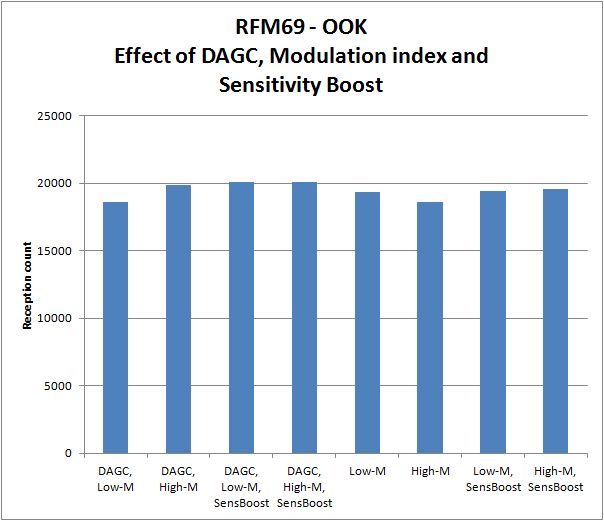Receiving 868 and 433MHz weather stations
Using an Arduino, JeeNode, Nodo, or Raspberry Pi with RFM12B, RFM01 or superheterodyne receiver, sensors of popular wireless consumer weather stations can be received. Your own, or your neighbors. This article is dedicted to collecting internet source on RF transmission protocols, as the available information seems to be scattered a lot. Oregon scientifc protocols are readily available. Then there semes to be a whole class of OEM weather stations from China, such as Fine Offset. Some of those modesl are avialable as Maplin, Alecto and more. Personally I started with a superheterodyne receiver at 433MHz, with which I was able to recieve my version-1 protocol Orgeon Scientific THN128 sensor, only in the same room. It did not make the next room. But my main sourceof inspiration was this article: http://www.susa.net/wordpress/2012/08/raspberry-pi-reading-wh1081-weather-sensors-using-an-rfm01-and-rfm12b/
which inspired me to invest in HopeRF modules. After I was able to receive Alecto WS4000 or alike stations (two somewhere in the neighborhood, but not the one I aimed at) with a Raspberry Pi, and very noisy with an Arduino Nano, I decided to invest in JeeNodes. Now my “production receiver will be a Jeenode with on-board RFM12B, or added RFM01. To be decided. My experimatal platform is the Raspberry Pi, as I can code easily very sloppy, use large amounts of memory and do all kinds of checks while still being in time for the next pulse.
The following sites/communities have loads of information on receiving weather stations:
http://www.jeelabs.org
http://nodo-domotica.com
The Nodo community is imho a bit difficult to access, as the major source of documentations is the c-code of a userplugin.
Through the following links RF transmission protocols descriptions can be found:
Oregon scientific:
Detailed description of V1, V2, V3 protocols:
http://wmrx00.sourceforge.net/Arduino/OregonScientific-RF-Protocols.pdf
Decoding of the V2 protocol links to jeenode/arduino/atmel code:
http://jeelabs.net/projects/cafe/wiki/Decoding_the_Oregon_Scientific_V2_protocol
